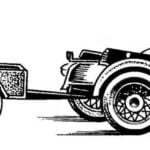 You’ve probably heard: “he’s Got good reflexes.” Thicket just as they say about athletes. For example, the goalkeeper. He must react instantly to the ball rapidly flying into the net. Or runner, the reaction of which the starting pistol is calculated for fractional seconds. The ability to find the right solution in any sudden situation, it is important for the pilot, the driver, the driver of the tram or trolleybus.
You’ve probably heard: “he’s Got good reflexes.” Thicket just as they say about athletes. For example, the goalkeeper. He must react instantly to the ball rapidly flying into the net. Or runner, the reaction of which the starting pistol is calculated for fractional seconds. The ability to find the right solution in any sudden situation, it is important for the pilot, the driver, the driver of the tram or trolleybus.
Automatic devices — simulators — help people to develop a response to a specific external stimulus.
An example of such a simulator is the game “Who is faster”. The technical solution can be any, but the rules remain the same.
The game involves three people. One of them is the “head” of the competition: he gives a light or sound signal (signal pump or call). Two other participants on his signal, each press of its button. The simulator determines who pressed the button first. Each meeting may consist of fifteen to twenty parties. In the game it is important that competitors have not seen the movements “of the head”: he is behind them. The intervals between the light or sound signals should constantly change so that participants could not pre-define a signal.
Simulators, circuits are represented in our drawings differ from one another, because in one case playing strive to light a bulb of the enemy, in the other — to repay it.


Fig. 5. The design of the equipment.
The scheme is the first simulator (Fig. 1) consists of turnips P1 and P2, pump L1 and L2, switches B1 and B2. In the coil circuit of the relay R1 is enabled the contacts R2/1, and the coil circuit R2 contacts R1/1. The lamp is painted in a different color.” If one of the players closes before the key B2, the relay R1. The lamp L1 and contacts R1/1 are simultaneously de-energised circuit the litany of the pampas L2 and R2 turnips. If the first switch Q1, the lamp L2. The winner is who more times to ignite the pampas of the enemy.
The scheme of the simulator (Fig. 2) consists of the same parts. But the lamps L1, L2 and turnips PI, P2 is connected to the power source in parallel through normally closed contacts R1/1, P2/1 and P2/2, P1/2, respectively. Light bulbs painted in different colors.
Figure 3 shows another of the schemes’1 simulator. It uses two electromagnetic relays of a pair and discriminating circuits, three lamp, four buttons, three socket plug and one battery. KN1 and Кн2 — button competing. Кн3 and Кн4 — button “head”.
Pressing the button lights up Кн3 Pampa L3, after which the players must quickly push your buttons KN1 and Кн2. If the first button is pressed KN1 lamp lights L1 and R1 triggers turnips. Contacts R1/1 closes, interlocking relay R1, the contact R1/2 is open. Lamps L1 and L2 indicate one of the players reaction is better. In the initial state lead trainer button Кн4 “Reset”.
To manufacture the training equipment you need the following items: R1, R2 — LV relay (RS4. 513. 709 — 733). Lamps L1 — L3 — 3.5 V or 6.3 V. the power Source B1 — battery 3336L. KN1 — Кн3 — bell button with locking pins. Кн4 button has NC contacts.
Plug-in terminals SH1 — SH3 are made from the phone sockets. The distance between them should be 20 mm (Fig. 4). Dimensions of the simulator are determined by the size of the parts (Fig. 5).
A. GALIGUZOVA, S. NOVIKOV, V. TRUFANOV, Sverdlovsk



